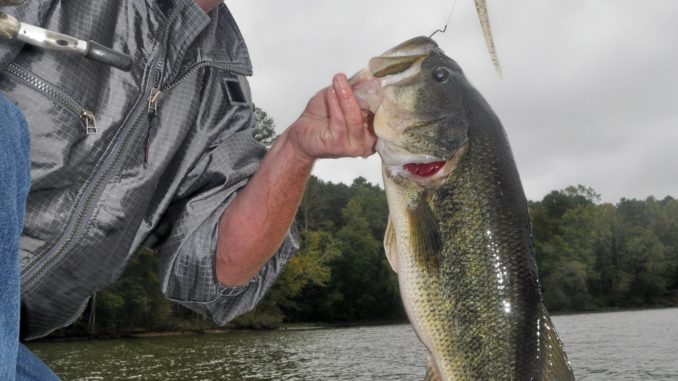
A major problem for anglers at Tuckertown Lake isn’t finicky fish but a disgusting, smelly, lure-fouling substance that covers most of the shoreline wood and rocks and the lake’s bottom.
Its nickname is “snot grass.”
The black, smelly mess actually is a green algae called “Spirogyra” that has died but doesn’t disperse. When the stuff expires or goes dormant, it covers anything it touches.
“One of the ways to avoid it is to not cast your baits into it and stay away from jigs you have to bounce off the bottom,” said guide Maynard Edwards. “It doesn’t hurt the fish; it’s just a nuisance to anglers.”
Tuckertown, for some reason, seems to have the most “snot grass” in the Yadkin chain. It may thrive because Tuckertown isn’t as wide or deep as other lakes and has a lot of shallow coves, more than neighboring High Rock, Badin or Tillery reservoirs.
Drop-shot rigs seem to work better in the summer at Tuckertown when fish go deep, and Spirogyra is ubiquitous. Anglers need to experiment to discover when the stuff stops coating their drop-shot plastics. The solution is to slide lures higher on the main line above the drop-shot weight until snot grass isn’t a problem.
“Anytime I can find a rock pile that doesn’t have snot grass on it, that’s a great place to fish,” said veteran angler Brian Shinn. “You’ll find some small areas in the lake without that stuff, and they’re bass magnets.”
Unfortunately, similar to hydrilla and milfoil, there’s no way to blow away snot grass.





Be the first to comment